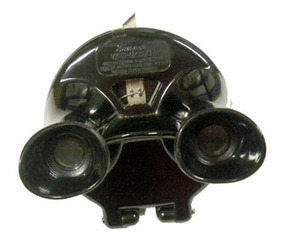Of all the TV shows about antiques and collectibles, we’re still huge fans of History’s show Pawn Stars. So we were thrilled to receive a casting call announcement from the show — and turn it into an exclusive interview with the show’s Casting Director, Martin Hardy!

How does the casting process work?
We are always looking for real sellers of unique, new items and encourage anyone who is interested in selling or pawning an item to contacts us through our casting email: pawnstarstvshow@leftfieldpictures.com. We get hundreds of submissions daily from potential sellers who are looking to sell their items on the show. Our casting department works very hard identifying rare and unique items that we have not shot with before but that also tell an interesting historical story.
Once we receive a great item that we feel is right for the show, we generally notify the seller to grab some more key information about it. Then we present it to the guys at the Gold &Silver Pawn shop to see if it is something that they would be interested in purchasing. Once we get the go ahead from Gold and Silver, we tell the seller their item has been approved and we schedule a date for them to come in.
Is there any compensation for being on the show? Do you pay for transportation, lodging?
Because we use real sellers of real items, we don’t provide any compensation for being on the show. Each seller has the opportunity of making a deal and being compensated for the purchase of their item.
We know that not everyone on the show sells their item; but does a person have to at least be willing to sell? Or can they just want to show off their item, get an appraisal, find out more information, (just meet the Pawn Stars!) etc.
At this time we are only able to cast sellers who are serious about selling their item. Of course they need to be comfortable with terms of the deal they reach with the shop, but we always hope they make a sale. We do not offer any appraisals for anyone who does not appear on the show with that item.
Are there any categories that you are more interested in than others?
At the moment we are really interested in anything that is rare and unique (books, autographed originals, artwork, historical documents and coins etc.)
Should a person get on the show, how much of a time commitment does it require?
Depending on the item, the filming of scenes generally last anywhere from 3-4 hours.
If you have something you think is rather rare and special — or wonder if it is, why not contact Martin and casting team? They’ll tell you if it makes the Pawn Stars grade. And we’ll all learn a little something along the way. More information is in the casting flyer below (click to see a larger version). You can contact them at pawnstarstvshow@leftfieldpictures.com (and you can mention Inherited Values sent ya!)

of nine photos decorated in seashells…





































































